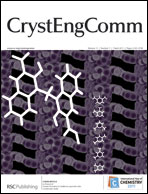Ni(OH)2@Co(OH)2 core–shell nanocolumns have been synthesized by an easy wet chemical process. Characterizations reveal that the layer structure is formed by stacking of several hexagonal nanosheets along the [001] direction. Each sheet is found to be of good crystallinity according to high-resolution transmission electron microscopy, with Ni(OH)2 in the central and Co(OH)2 in the peripheral region. The diagonal length of the hexagon is about 700–900 nm and the height of the nanocolumn is about 140–200 nm, with each nanosheet of about 20 nm in thickness. Upon calcination, the Ni(OH)2@Co(OH)2 nanocolumns become a porous NiO@Co3O4 nanostructure. At low temperature, Ni(OH)2@Co(OH)2 exhibits an antiferromagnetic (AFM) transition at TN = 12 K. This is from Co(OH)2 while the AFM transition of Ni(OH)2, expected at 25 K, is not observed. A freezing temperature is also observed at TF = 7.5 K most likely arising from the randomly oriented moments in the outermost surface of Co(OH)2. After the calcination, the AFM transition of Co3O4 in the porous NiO@Co3O4 nanostructure is observed at 28 K, which is much reduced from the bulk value of TN = 40 K, probably arising from the finite size effect. The characteristic dimension with the porosity is thus determined as about 8 nm.

You have access to this article
 Please wait while we load your content...
Something went wrong. Try again?
Please wait while we load your content...
Something went wrong. Try again?


 Please wait while we load your content...
Please wait while we load your content...